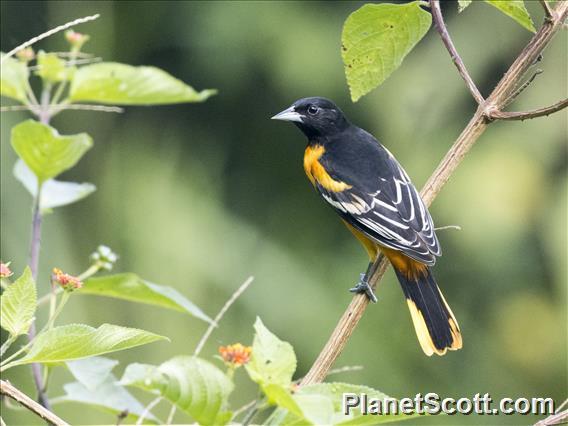Baltimore Oriole (Icterus galbula)

Baltimore Oriole (Icterus galbula)

Baltimore Oriole (Icterus galbula) - Female


×



Baltimore Oriole (Icterus galbula)

Baltimore Oriole (Icterus galbula) - Female
About Baltimore Oriole (Icterus galbula)
- Kingdom: Animals
- Phylum: Chordates
- Class: Birds
- Order: Perching Birds
- Family: American Blackbirds and Orioles
The Baltimore oriole is a small icterid blackbird common in eastern North America as a migratory breeding bird. It received its name from the resemblance of the male's colors to those on the coat-of-arms of 17th-century Lord Baltimore. Observations of interbreeding between the Baltimore oriole and the western Bullock's oriole Icterus bullockii, led to both being classified as a single species, called the northern oriole, from 1973 to 1995. Research by James Rising, a professor of zoology at the University of Toronto, and others showed that the two birds actually did not interbreed significantly.
Source: Wikipedia
Visits
-
2007-10-10
La Mancha, Mexico -
-
2009-02-02
Santiago de Atitlan, Guatemala -
2009-02-03
Los Tarrales, Guatemala -
2009-02-15
Granada, Nicaragua -
2009-02-18
Parque National Palo Verde, Costa Rica -
2009-03-15
Boca de Cupe, Panama -
2009-03-19
Punta Patino, Panama -
2009-05-05
Elgin - Bluff Spring Fen, United States of America -
-
2010-06-25
Elgin - Bluff Spring Fen, United States of America -
2012-07-08
Necedah NWR, United States of America -
2012-07-09
Sax-Zim Bog, United States of America -
2013-04-19
Bolivar Peninsula, United States of America -
2013-04-19
Anahuac NWR (UTC 049), United States of America -
-
-
-
-
-
-
-
-
-
-
-
-
-
-
-
-
-
-
-
-
-
-
-
-
-
-
-









